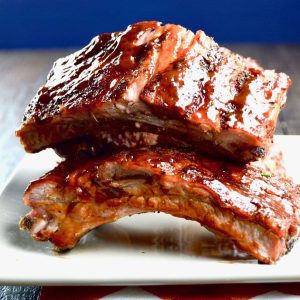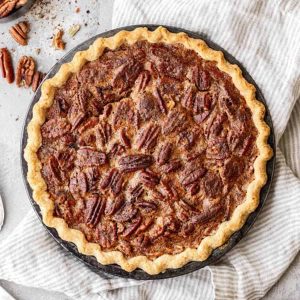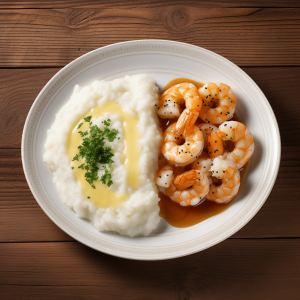
Reviving a Classic: The Art of Southern Spoonbread Baking
Spoonbread. The very name conjures images of sun-drenched porches, languid afternoons, and the comforting aroma of cornmeal kissed by butter. This seemingly simple baked dish, a staple of Southern cuisine, is far more nuanced than its humble moniker suggests. It’s a testament to the region’s resourceful spirit, transforming readily available ingredients into a culinary masterpiece that transcends mere sustenance. This isn’t your grandma’s cornbread; it’s a revelation, a journey through textures and flavors waiting to be rediscovered.
A History Steeped in Tradition:
The origins of spoonbread are shrouded in the mists of time, a testament to its enduring appeal across generations. While pinpointing an exact birthdate is impossible, its evolution is intrinsically linked to the practicality of Southern life. Corn, a readily available and versatile crop, formed the backbone of many dishes, and spoonbread’s creamy, porridge-like texture provided a satisfying alternative to traditional cornbread. Early recipes often involved simple ingredients – cornmeal, milk, eggs, and butter – highlighting a resourceful approach to cooking.
Over time, variations emerged, reflecting the diverse culinary landscape of the South. Some recipes incorporated cheese, herbs, or even buttermilk, showcasing the adaptability of the dish and the creative spirit of its makers. Today, spoonbread remains a cherished tradition, passed down through families and celebrated in kitchens across the region.
Beyond the Basics: Mastering the Art of Spoonbread:
The beauty of spoonbread lies in its simplicity, yet mastering its subtle nuances requires understanding a few key elements:
-
The Cornmeal Conundrum: Different cornmeal varieties yield vastly different results. Fine-ground cornmeal produces a smoother, more delicate texture, while coarser grinds offer a more rustic, hearty bite. Experimentation is key to finding your perfect grain.
-
The Liquid Equation: The ratio of liquid to cornmeal directly impacts the final consistency. Too much liquid, and you’ll end up with a watery, unappetizing mess. Too little, and you’ll have a dense, dry loaf. Mastering this balance is crucial to achieving the perfect spoonbread consistency.
-
The Baking Alchemy: Baking time and temperature are paramount. A slow, gentle bake ensures even cooking and prevents over-browning, allowing the delicate flavors to develop fully. Patience is a virtue when baking spoonbread.
Spoonbread Variations: A Culinary Exploration:
While the traditional recipe reigns supreme, the possibilities for culinary innovation are endless:
| Variation | Description | Key Ingredients Added |
|---|---|---|
| Cheddar Spoonbread | Rich and savory, with a sharp cheddar kick. | Sharp cheddar cheese |
| Jalapeño Spoonbread | A spicy twist, adding a fiery kick to the classic. | Jalapeños, chili powder |
| Herbed Spoonbread | Aromatic and fragrant, with a burst of fresh herbs. | Fresh herbs (chives, thyme) |
| Sweet Spoonbread | A delightful dessert variation, incorporating sugar. | Sugar, honey, cinnamon |
Serving Suggestions: Elevating the Experience:
Spoonbread’s versatility extends beyond its preparation. It serves as a delightful side dish, a comforting base for savory stews, or even a unique dessert when served with fruit and a dollop of whipped cream.
- Savory Pairings: Stews, chili, soups, grilled meats.
- Sweet Pairings: Fruit compotes, berries, honey, whipped cream.
Reviving a Legacy:
Spoonbread is more than just a recipe; it’s a story, a tradition, a taste of the South’s rich culinary heritage. By embracing its simplicity and exploring its endless variations, we not only honor its past but also ensure its vibrant future, one delicious spoonful at a time. So, gather your ingredients, preheat your oven, and embark on a culinary journey back in time – the rewards are undeniably delicious.
:max_bytes(150000):strip_icc()/southern-spoon-bread-3061281-Final-5bc8ee6dc9e77c0051601a2b.jpg)
Additional Information
Reviving a Classic: A Deeper Dive into the Art of Southern Spoonbread Baking
The resurgence of interest in Southern spoonbread is more than just a culinary trend; it reflects a broader societal appreciation for regional cuisines and a desire to connect with culinary heritage. While a simple recipe at its core, the nuanced art of spoonbread baking offers a fascinating lens through which to examine historical foodways, regional variations, and the evolving role of traditional dishes in modern gastronomy.
Historical Context and Regional Variations:
Spoonbread’s origins are deeply rooted in the antebellum South, where cornmeal, a readily available and affordable staple, formed the foundation of many dishes. Unlike its more structured cornbread cousin, spoonbread’s creamy, custard-like texture speaks to a different culinary philosophy. This likely stemmed from the availability of ingredients and cooking technologies. The absence of leavening agents in some early recipes suggests a reliance on the inherent qualities of cornmeal and eggs to achieve a tender consistency.
Regional variations, however, abound. For instance, Appalachian spoonbread often incorporates buttermilk or sour milk for a tangier flavor profile, reflecting the resourcefulness of mountain communities. Coastal variations might include seafood or shellfish, demonstrating the influence of abundant local ingredients. These subtle differences highlight the adaptable nature of the recipe and its evolution within specific geographical and cultural contexts.
The Chemistry of Spoonbread:
A deeper understanding of the chemical processes involved in spoonbread baking illuminates the complexities behind its seemingly simple recipe. The interplay between starch gelatinization, protein coagulation, and fat emulsification determines the final texture and flavor.
- Starch Gelatinization: The heat from baking causes the starch granules in the cornmeal to absorb water and swell, creating a thickened, viscous mixture. The type of cornmeal (fine, medium, coarse) directly influences the final texture, with finer grinds resulting in a smoother, creamier spoonbread.
- Protein Coagulation: Eggs contribute both protein and fat to the batter. The heat denatures the egg proteins, forming a matrix that contributes to the spoonbread’s structure and prevents excessive sogginess. The proportion of eggs to cornmeal is crucial in achieving the desired texture.
- Fat Emulsification: The inclusion of butter or oil contributes to richness and tenderness. The emulsification of these fats within the batter contributes to a smoother texture and prevents separation.
These interactions are delicate and easily disrupted by variations in ingredients, baking temperature, and baking time. Mastering spoonbread requires a keen understanding of these fundamental chemical processes.
The Spoonbread Renaissance: A Modern Perspective:
Today, spoonbread’s resurgence is driven by several factors:
- Farm-to-Table Movement: The emphasis on locally sourced, high-quality ingredients enhances the inherent flavors of the dish. Using heirloom cornmeal varieties, for example, offers a more nuanced and complex flavor profile than commercially produced cornmeal.
- Interest in Heritage Cuisine: A renewed interest in regional American cuisine fuels the desire to explore and revive traditional recipes like spoonbread. This is reflected in the increasing number of cookbooks focusing on Southern cuisine and the inclusion of spoonbread in upscale restaurants.
- Food Blogging and Social Media: Online platforms provide recipes, variations, and vibrant visual representations of spoonbread, attracting a wider audience and fostering experimentation. The sharing of personal experiences and tips contributes to a collaborative, evolving understanding of the dish.
Case Study: The Rise of Spoonbread in Fine Dining:
While traditionally a humble home-style dish, spoonbread has made a notable appearance in high-end restaurants. Chefs are reinterpreting the classic recipe, using it as a base for innovative savory and sweet dishes, incorporating gourmet ingredients and sophisticated plating techniques. This demonstrates the versatility and adaptability of spoonbread and its potential to become a sophisticated culinary element. Analyzing menu trends in restaurants focusing on Southern cuisine could provide further data on the adoption and evolution of this dish within the professional culinary world.
In conclusion, the art of Southern spoonbread baking transcends a simple recipe; it embodies a rich history, intricate chemical processes, and a growing modern appreciation. Further research into historical culinary practices, comparative analysis of regional variations, and continued exploration of the dish’s adaptability in modern gastronomy will undoubtedly enhance our understanding and appreciation of this classic Southern comfort food.






